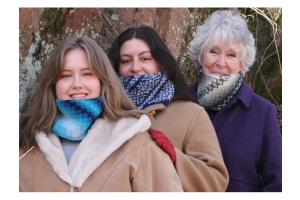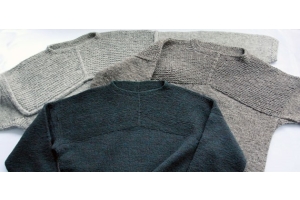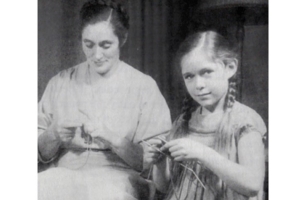Blog #12 Meg Swansen on cabling without a needle
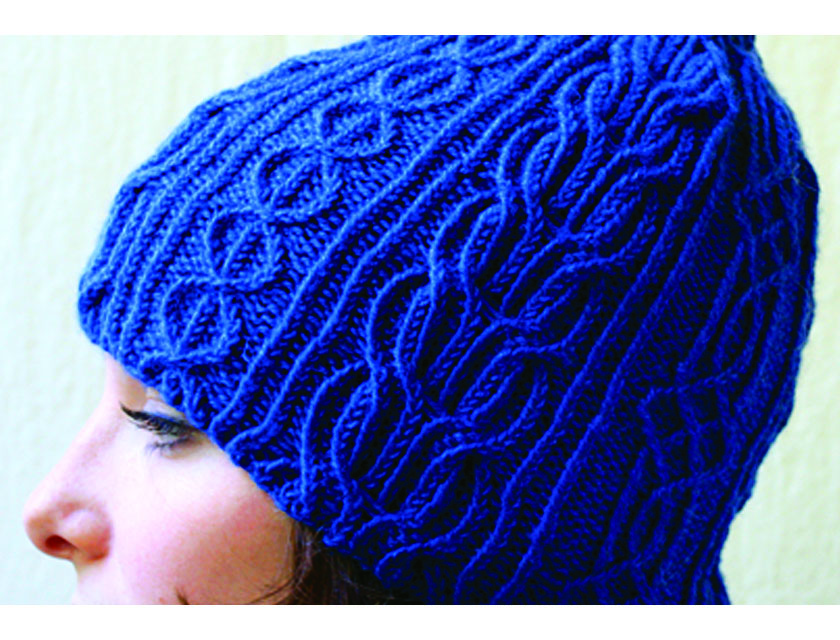
A Few Notes on Cables
Since Right and Wrong are subjective in handknitting, I have accumulated my own personal set of “rules” to see if I can avoid my less-than-favorite knitting activities. One example is the challenge to see how wide a cable I can execute without having to scrounge about for help from a ‘cable needle’ (almost anything will substitute: a d.p. needle, another circular, or even a smooth stick). I can usually manage 3 over 3, and often 4 sts over 4, but for any number greater than that, I seek, and am grateful for, an assist.
The smallest possible cable you can make is a Travelling Stitch, which utilizes only two stitches; one crossing over the other, either to the L or to the R.
Please take a look at our short video to see that an additional tool is not aways necessary for relatively narrow cables (I demo 2 over 2 and 3 over 3).
What a blessing it is that cable (and lace) patterns are now shown in chart form. The current (widely used) charted-cable format was originated by Barbara G. Walker back in the early 1970s, and enables you to see the design and the direction of the cable crosses at a glance.
Of Barbara Walker’s quartet of Treasuries, the Third Treasury, Charted Knitting Designs has the most cables -with nearly all of them original to the author herself, and the charts drawn by Barbara...by hand.

Preceding the cable chapter, Barbara presents drawings of 80 different cable possibilities. The copy of page 61 (above) shows four different cables, plus four variations for each one. (Nearly always, cables are utilized with a few purl stitches on each side to set them off.)
To further explain, here is an example of a cable from Charted Knitting Designs: Barbara’s “Cross-Banded Cable”.
The lines are numbered to be read for flat (back and forth) knitting. If you prefer to knit in the round, read each chart line from the right-hand-side as follows:
1. p2, k6, p2
2. p2, 3-over-3 front cross, p2
3 & 4. Repeat row 1.
5 & 6. p2, k1, p4, k1, p2
7 & 8. Repeat row 1.
Now return to row 1.
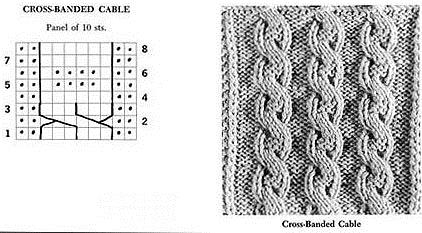
You may choose to eliminate the 4 purl stitches in the middle of the cable (on rows 5&6), to have 7 rounds of plain, soothing knit between the exciting cable-rounds.
If you are new to cables, I hope that you dive in and expand your knowledge and skill. Knit a swatch; or better yet, a circular hat. Start with simple traveling stitches, then expand to 2 over 2, then 3 over 3 cables, and work your way up to some of Barbara’s exotic patterns from Charted Knitting Designs. Cables are very satisfying to produce, and dramatic to behold. You very soon will find that they are not nearly as difficult as they may appear.

